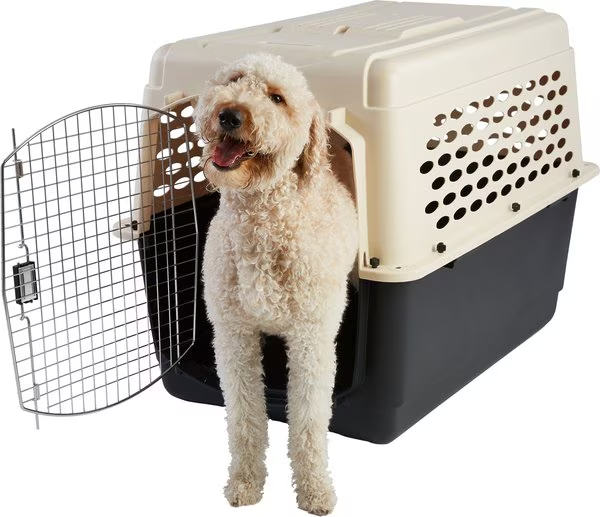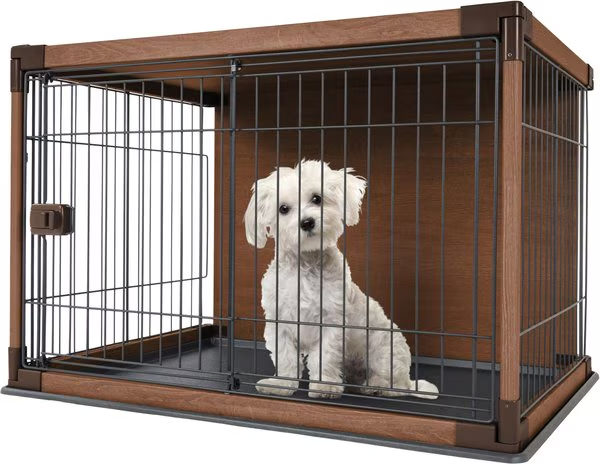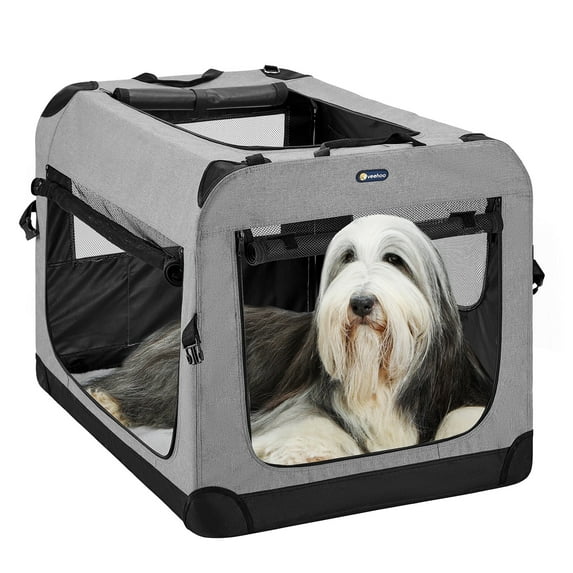Address
304 North Cardinal
St. Dorchester Center, MA 02124
Work Hours
Monday to Friday: 7AM - 7PM
Weekend: 10AM - 5PM
Address
304 North Cardinal
St. Dorchester Center, MA 02124
Work Hours
Monday to Friday: 7AM - 7PM
Weekend: 10AM - 5PM

Table of Contents
ToggleDog Crate training is one of the most effective and rewarding things you can do for your dog. Yet, many people feel a sense of guilt about it, viewing a crate through a human lens of “being caged up.” The truth is, a dog’s natural instincts are entirely different. Dogs are den animals who instinctively seek out small, cozy, and private spaces where they can feel safe and secure. A crate, when introduced correctly, becomes that very space—a personal den they can call their own.
This guide will walk you through a positive, step-by-step process to successfully crate train your dog. We’ll go beyond the basics, addressing common challenges and providing modern tips to make the crate your dog’s favorite place.
Before you begin dog crate training, you must have the right equipment. The crate you choose is not just a box; it’s a home for your dog. Selecting the right one is key to their comfort and success.
Size Matters: The most common mistake is getting a crate that is too big. Your dog’s crate should be just large enough for them to stand up, turn around, and lie down comfortably. If it’s too big, they may be tempted to use one corner as a bathroom, which defeats the purpose of dog crate training.
For Growing Puppies: If you have a puppy, buy a crate that will fit their adult size. Then, use a divider panel to adjust the interior space as your puppy grows. This ensures the crate is always the perfect size for house-training.

The most popular option, offering excellent ventilation and visibility. Many are collapsible for easy storage and travel.

Also known as travel dog crates, these are more enclosed, offering a greater sense of security. They are the standard for airline travel and are durable and easy to clean.

Lightweight and portable, these are great for trips in the car or for temporary use with a calm dog.
For a detailed breakdown of crate types and sizes, check out our guide on [Link to Cluster Content: Dog Crate Sizing and Types].
Your mindset is crucial. Never, ever use the crate as a punishment. The crate must be associated with positive experiences and a feeling of calm. The more relaxed your dog is when you introduce the crate, the more they will see it as a place of rest and peace.
Make it a Fun Zone: Place the crate in a central part of your home where your dog spends time. Put a comfortable bed, some favorite toys, and high-value treats inside. Leave the door open and let your dog explore it on their own terms.
Mealtime Ritual: Begin feeding your dog their meals inside the crate. Place the food bowl all the way at the back so they have to go in completely to eat. This creates a powerful positive association with the crate.
The “Lure and Reward” Method: Lure your dog into the crate with a treat. Once they are inside, give them the treat and praise them enthusiastically. This teaches them that going into the crate is a rewarding experience.
The first night in the crate can be difficult, but consistency is key.
Before Bed: Take your dog out for a final potty break and a good walk or play session to tire them out.
Make it Cozy: Put a comfortable bed, a favorite toy, and an old t-shirt with your scent on it inside the crate. The familiar smell can be a huge comfort.
Lights Out: Don’t make a big fuss when you put your dog in the crate for the night. Say a calm command like “kennel” or “crate,” give them a treat, and close the door.
Handling Crying: It’s normal for a dog to whine or cry. Unless it’s a frantic, non-stop cry of distress, try to ignore it. Letting them out will teach them that whining gets them what they want. Wait for a moment of quiet before letting them out for a bathroom break.
Once your dog is comfortable with night-time crating, begin practicing short confinement periods during the day. Start with just 5-10 minutes at a time and gradually increase the duration.
Beyond basic rewards, you can use fun games and high-value treats to make the crate an amazing place to be.
Frozen KONGs: Fill a KONG toy with a mix of kibble, peanut butter, or yogurt and freeze it. Give this to your dog as a special treat only when they are in the crate. This keeps them happily occupied and extends their positive association with the crate for a long time.
“Crate Games”: Incorporate the crate into playtime. Throw a ball or a treat into the crate during a game of fetch. The goal is for your dog to go in and out of the crate at their own will, seeing it as a part of their fun, not a punishment.
For more ideas on crate enrichment and making the crate an irresistible place, read our article on [Link to Cluster Content: Dog Beds for Crates and Dog Crates and Covers].
Not every dog will take to crate training immediately. Here are some common challenges and how to handle them.
Excessive Whining and Barking: If your dog is crying and you know they don’t need to go to the bathroom, it’s likely a bid for attention. Be patient and wait for a moment of silence before you let them out. This teaches them that calmness is what gets them rewarded.
Crate Accidents: An accident in the crate usually means one of two things: the crate is too big, or you left them in there for too long. Thoroughly clean the crate to remove any scent, as dogs are drawn to the smell of their old messes.
Separation Anxiety: If your dog panics or injures themselves trying to escape the crate, you may be dealing with a more serious case of separation anxiety. You may need to consult a professional dog trainer for a tailored plan.
Success in dog crate training comes from a consistent and patient approach. Here are a few final, crucial tips:
Never Leave Collars or Tags On: Always remove your dog’s collar, tags, and any harnesses before putting them in the crate. Tags can get caught in the wire and pose a strangulation risk.
Monitor Remotely: Consider using a remote pet camera to monitor your dog while you are away. This can help you understand if they are calm, sleeping, or showing signs of anxiety.
Be Patient: Crate training is not a linear process. There will be good days and bad days. Stay consistent with your training methods, and your dog will eventually learn to love their cozy new den.
A crate, when used with kindness and consistency, is a fantastic tool for creating a secure, well-behaved, and happy dog. It gives them a space all their own, a sense of security, and helps you both live in harmony.
I f you’re unsure about which dog crate to purchase, you can check out our article on Everything You Need To Know About Dog Crates to help you make an informed decision
We also have a variety of amazing high quality crates in our online shop where you can make a selection of what best suits your needs